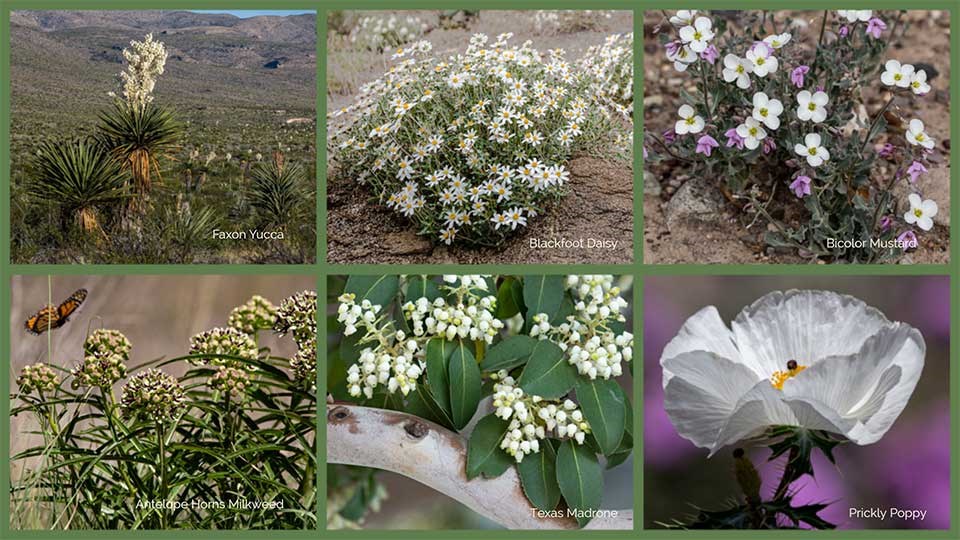
NPS/CA Hoyt Blackfoot Daisy (Melampodium leucanthum). Widespread throughout the lower desert, blackfoot daisies bloom nearly year-round. Bicolor Mustard (Nerisyrenia camporum). The sign of spring. Bicolor mustards bloom early in the spring and can carpet the desert floor. Their sweet scent can overwhelm you. Antelope Horns Milkweed (Asclepias asperula). Antelope horns milkweed is a common sight in the late spring along the main park roads. Monarch butterflies migrating north from Mexico will stop to lay eggs on the long, thin leaves. Texas Madrone (Arbutus xalapensis). Texas madrone is a small tree with distinctive smooth, red, peeling bark; white flowers in the spring and red berries in the fall. The national champion madrone is found in the Chisos Mountains and is 30 ft. tall with a 42 ft. crown. Pricklypoppy (Argemone sp.) Three species of pricklypoppy grow in the park. Their delicate, white flowers seem ill-suited to survival in the desert. Look for the pale pink variety of Chisos pricklypoppy along the Old Ore and River roads. 
NPS/CA Hoyt Leatherstem (Jatropha dioica). An inhabitant of desert habitats, leatherstem puts on leaves and flowers only after rain. The sap turns red after exposure to oxygen, giving it the common name of Sangre de Drago. Dodder (Cuscuta sp.) At least 3 species of parasitic dodder grow in the park. The bright orange stems of dodder are easily visible along the roadside. What does the dodder say? Fragrant Heliotrope (Heliotropium convulvulaceum). Grows in the sandy soils of Boquillas Canyon. Fringed Twinevine (Funastrum cynanchoides). A vine milkweed that clambers over desert shrubs. The umbels of flowers have a distinct, pungent odor. Old Man's Beard (Clematis drummondii) Another vine that uses bushes and trees as support. The small, white flowers are fairly inconspicuous. In the late summer and fall the vine is covered in long, white-haired seeds that give the vine its common name. |
Last updated: July 18, 2025
